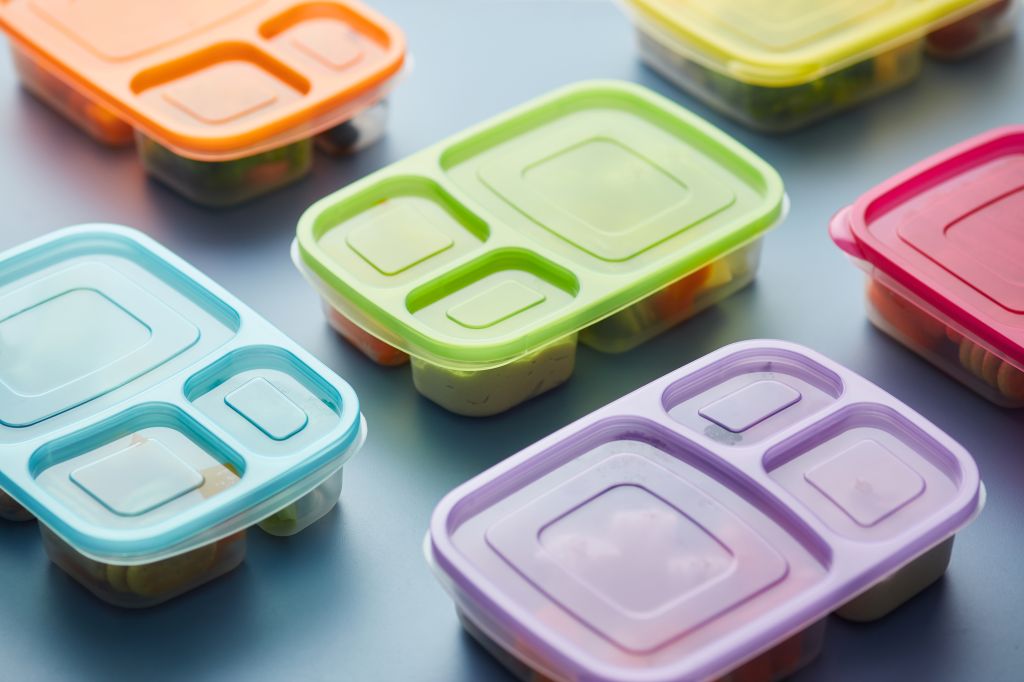Back-to-School Shopping That’s Easy on Your Wallet (And The Planet)

Published August 4, 2023 • 6 Min Read
If you have school-age kids, you might be bracing for back-to-school shopping. It can test your patience, endurance and finances – but it doesn’t have to.
First, you are not alone. After the December holiday shopping season, back-to-school is right up there as one of the busiest times of year for Canadian retailers. In 2022, 86 per cent of Canadians made back-to-school purchases, according to the Retail Council of Canada, with majority of those shoppers spending more than $50. Clothing and books tend to be the most popular purchases, followed by electronics.
With rising costs and inflation, how far will your dollars stretch this year? Check out these 10 tips and ideas so you can make the grade with school supplies, clothing and electronics that are easier on your wallet and the planet.
1. Shop your cupboards
Our family once divided new packages of pencils, pens and paper between our kids — then discovered we already had stacks of unopened supplies hiding at the back of a basement shelf. Another year, our daughter crawled under her bed and unearthed a gold mine of erasers, pencil crayons and markers. Lesson learned! We now keep extra writing tools in old mugs and stack paper in a single desk drawer so we can easily check inventory before buying anything new. We also reuse existing supplies that are still in good shape, such as backpacks, partially used notebooks, binders and folders.
2. Buy in bulk
Look for larger and minimally wrapped packages of paper, notebooks, graph paper, pencils and pens. You’ll not only save money over the long term, since buying in bulk typically costs less per unit, you’ll reduce packaging waste, which accounts for more than 30 per cent of all the waste generated each year, according to the U.S. Environmental Protection Agency. To offset the upfront purchase price, you could connect with other budget-conscious families to split the cost and divide up the supplies. Our street has a group chat that makes it easy to ask questions, organize and get quick answers from community-minded neighbours. Bonus points for the planet if you purchase supplies made from recycled or sustainable materials, such as refillable pens or notebooks made with recycled paper.
3. Check for eco-friendly labels
How do you know if a product is actually good for the environment? When the Government of Canada is shopping for supplies, its procurement teams look for paper with at least 30 per cent recycled content or made from sustainably managed forests. You may have seen labels with an FSC logo, for example, which is a stamp of approval for forest-friendly products from the Forest Stewardship Council. Read the fine print before adding to your cart: Is the packaging of a product you’re considering made with recycled materials? Does the company recycle its manufacturing waste?
4. Save up to $400 on waste-free lunches
Ever wonder if it’s worth switching from packaged convenience foods and disposable zippered bags to a waste-free lunch with reusable containers, a cloth napkin and a water bottle? One parenting magazine did the math and estimated that parents could save about $400 per child per school year going the waste-free route. Prepare for sticker shock when you invest in a collection of reusable lunch containers, but keep in mind that you’ll save in other ways. For example, it costs less to pack apple juice, yogurt and veggies in washable containers vs disposable single servings. Label containers with your child’s name to make sure those investment pieces make it home!
5. Skip the mall
Instead of heading to the mall for clothes, plan a day to hit cool thrift stores or consignment shops, and scroll online marketplaces and buy-nothing groups with the kids. You can make it a treasure hunt for gently used gems. Buying previously loved clothes helps extend the life of each item – which can save you money while also reducing the demand for new clothing production. According to the United Nations, the fashion industry is responsible for 8-10 per cent of global carbon emissions – more than all international flights and maritime shipping combined. In Canada alone, an estimated 12 million tons of textiles are thrown away each year.
6. Get free clothes
I refresh my wardrobe with “new” looks by hosting and attending clothing swaps at least twice a year. Here’s how it works: ask everyone to bring clean clothing in good shape that they want to trade. You sort the donated garments on tables and organize by type (tops, pants, accessories, etc.) or by size. Allow everyone to browse and take home new-to-them items. You’ll end up with clothing you’ve never worn before without spending money or contributing to waste (be sure to donate leftover clothing).
7. Choose energy-efficient electronics
Look for Energy Star–certified products when you’re purchasing laptops, tablets or other electronic devices. They’re designed to consume less electricity, which could save money over the long term vs a conventional model.
8. Try two ways to save on textbooks
Instead of purchasing new textbooks, consider exploring used options when books are required for a course. Find out if your college or university has a used book sale on campus; or search your school’s or faculty’s Facebook groups. Digital textbooks are now common, and a subscription for the class or year is sometimes required. They eliminate paper waste, help reduce the carbon footprint associated with printing and transportation, and often cost less.
9. Share dorm essentials
When decorating student apartments or dorm rooms, upcycle secondhand gems for less at yard sales or flea markets. Coordinate with roommates to share items like mini-fridges, microwaves or printers. This not only saves money if you’re purchasing new appliances, it may also reduce energy consumption vs keeping duplicates plugged in. Plus, it’s a great opportunity to learn to share fridge space and clean the microwave!
10. Try online price comparisons
Price comparison tools make it easy to school yourself on the prices different retailers are charging for the same product. These sites or apps collect info from various companies and present them to you in a user-friendly format: you can see prices for the same item side by side without searching a zillion sites. You can also set up alerts so you’ll be notified when the price drops on an item you like. Search for price comparison sites in Canada to find one that works for you. They are great for big-ticket items like electronics, appliances or travel, where prices can vary. Remember to factor in shipping to ensure the price savings won’t be gobbled up by delivery costs.
This article is intended as general information only and is not to be relied upon as constituting legal, financial or other professional advice. A professional advisor should be consulted regarding your specific situation. Information presented is believed to be factual and up-to-date but we do not guarantee its accuracy and it should not be regarded as a complete analysis of the subjects discussed. All expressions of opinion reflect the judgment of the authors as of the date of publication and are subject to change. No endorsement of any third parties or their advice, opinions, information, products or services is expressly given or implied by Royal Bank of Canada or any of its affiliates.
Share This Article





